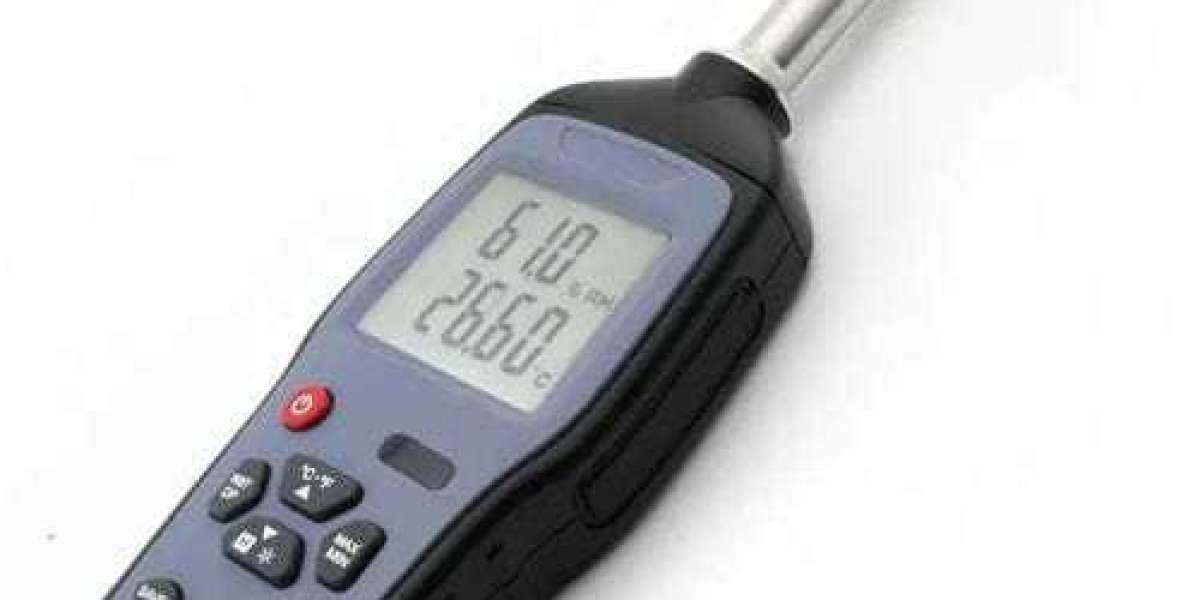In today’s world, where precise environmental monitoring plays a crucial role in industries, agriculture, healthcare, and even home management, a hand-held hygrometer stands out as a compact, versatile, and powerful tool. Designed for convenience and portability, these devices provide real-time humidity readings that help professionals and everyday users ensure safety, comfort, and compliance. From greenhouses and cleanrooms to warehouses and households, Portable hygrometers are trusted for their accuracy and ease of use.
This in-depth article explores what Portable hygrometers are, how they function, their different types, key features, and essential applications. Whether you’re a technician, a scientist, or simply someone who wants to maintain optimal indoor conditions, understanding this tool will empower you to make better environmental decisions.
What Is a Hand-Held Hygrometer?
A hand-held hygrometer is a portable instrument used to measure the relative humidity (RH) of air. Many modern devices also include additional sensors for temperature, dew point, and wet bulb temperature, providing a more comprehensive view of atmospheric conditions. These devices are typically battery-powered, lightweight, and easy to carry, making them ideal for on-the-go measurements.
Unlike stationary or wall-mounted hygrometers, the hand-held variety is meant for spot checks and mobile assessments, offering instant readings with the push of a button. Thanks to advancements in digital technology, many Portable hygrometers are now highly accurate, feature intuitive interfaces, and support data logging for later analysis.
Why Humidity Matters
Humidity—the amount of water vapor in the air—can significantly affect health, comfort, manufacturing processes, product quality, and equipment longevity. Too much humidity can result in mold growth, condensation, and discomfort. Too little humidity can cause dryness, respiratory irritation, and static electricity.
Monitoring and controlling humidity is essential in:
- Homes (for comfort and indoor air quality)
- Greenhouses (for plant health)
- Museums and archives (for preservation of materials)
- HVAC systems (for climate control)
- Pharmaceuticals and labs (for environmental compliance)
The ability to check humidity quickly and accurately—wherever you are—is what makes a hand-held hygrometer such a valuable tool.
How Does a Hand-Held Hygrometer Work?
Most modern Portable hygrometers use capacitive or resistive sensors to measure humidity. Here’s how they function:
Capacitive Sensors
These sensors measure changes in electrical capacitance caused by moisture levels in the surrounding air. As water vapor enters a polymer dielectric, it changes the material’s capacitance, which is then converted into a readable value of relative humidity.
Resistive Sensors
These work by measuring the change in electrical resistance of a material as it absorbs moisture. Higher humidity levels reduce resistance, allowing the device to calculate RH.
Many digital Portable hygrometers integrate both humidity and temperature sensors, allowing them to also compute:
- Dew Point – the temperature at which air becomes saturated and condensation begins.
- Wet Bulb Temperature – the lowest temperature air can reach through evaporation.
- Absolute Humidity – the actual amount of water vapor in the air, typically expressed in grams/m³.
Key Features of High-Quality Hand-Held Hygrometers
When selecting a Portable hygrometer, the following features help ensure accurate performance and user satisfaction:
- Large, Backlit Digital Display: Easy-to-read screens that show RH and temperature simultaneously, often with color indicators.
- Fast Response Time: High-end sensors that quickly adapt to changing humidity levels.
- Data Logging and Storage: Ability to save readings for record-keeping or trend analysis.
- Dew Point and Wet Bulb Calculation: Essential for applications in HVAC and meteorology.
- Calibratable Sensors: Ensures long-term accuracy, especially in critical industrial or lab settings.
- Compact, Rugged Design: Built for durability in field conditions, with dust or water resistance.
- Battery Efficiency: Long-lasting operation for extended fieldwork.
Some models also offer Bluetooth or USB connectivity, allowing data transfer to mobile devices or PCs for in-depth analysis.
Common Applications of Hand-Held Hygrometers
Thanks to their portability and versatility, Portable hygrometers are used across a wide range of industries and environments.
1. HVAC and Building Maintenance
Technicians use hygrometers to check humidity levels in buildings and HVAC systems. Proper humidity control improves energy efficiency, comfort, and mold prevention. These tools are crucial when diagnosing poor air quality or balancing ventilation systems.
2. Agriculture and Greenhouses
Humidity is vital for plant health. Farmers and greenhouse operators use hand-held hygrometers to maintain ideal humidity levels, especially for delicate crops like orchids or tropical plants. This helps to optimize growth conditions and prevent diseases caused by excess moisture.
3. Pharmaceutical and Medical Fields
Controlled humidity environments are necessary for drug stability, lab equipment calibration, and sterile conditions. Portable hygrometers are used for spot-checks in labs, cleanrooms, and storage areas to ensure regulatory compliance.
4. Museums, Archives, and Libraries
Preservation of art, books, and historical documents requires strict control of environmental conditions. Hygrometers help curators and archivists maintain humidity levels that prevent warping, mold growth, or paper deterioration.
5. Industrial Manufacturing
In electronics, textiles, and food processing industries, moisture can cause defects, corrosion, or spoilage. Portable hygrometers are used during production and storage to maintain product quality and safety.
6. Construction and Restoration
Humidity levels are measured before painting, plastering, or flooring to prevent premature failures or damage. In restoration work, especially after water damage, hygrometers help identify hidden moisture behind walls or floors, guiding effective remediation.
Benefits of Using a Hand-Held Hygrometer
Owning or using a Portable hygrometer comes with several advantages:
- Real-Time Readings: Immediate feedback on humidity levels for fast decision-making.
- Portability: Small and lightweight—perfect for fieldwork and mobile professionals.
- Multi-Use Functionality: One tool for multiple tasks—temperature, RH, dew point, and more.
- Cost-Efficiency: Prevents costly damage by identifying humidity issues early.
- Non-Invasive Testing: Allows users to assess environmental conditions without installing permanent equipment.
- User-Friendly: Designed for intuitive operation, even by non-experts.
These benefits make Portable hygrometers ideal for professionals and homeowners alike.
How to Choose the Best Hand-Held Hygrometer
With numerous models available, selecting the right device depends on your specific needs. Consider these factors:
- Measurement Range and Accuracy: For critical environments (e.g., labs or museums), look for devices with ±1% RH accuracy.
- Display and Interface: A clear, backlit screen with easy-to-navigate buttons is essential for quick readings.
- Environmental Durability: Choose a rugged, water-resistant model for outdoor or industrial use.
- Data Features: If you need long-term records, opt for models with memory and data export capability.
- Budget and Brand: Established brands typically offer better support, calibration services, and warranties.
Maintenance and Calibration
For optimal performance, it’s essential to keep your Portable hygrometer properly maintained:
- Regular Calibration: Calibrate your device annually or as recommended by the manufacturer to maintain accuracy.
- Proper Storage: Store in a dry, clean case when not in use to avoid damage to sensors.
- Clean the Sensor: Use a soft cloth to remove dust and particles from the sensor area.
- Battery Care: Remove batteries if the device won’t be used for long periods.
These simple steps ensure long-term reliability and accuracy.
Conclusion
Whether you're safeguarding a priceless artifact, growing sensitive crops, inspecting HVAC systems, or monitoring a manufacturing process, a hand-held hygrometer provides the precision and flexibility needed for success. Its portability, reliability, and accuracy make it an invaluable tool across countless applications.
As climate control and environmental awareness become increasingly important, Portable hygrometers offer an easy and effective way to monitor and maintain optimal humidity levels—anywhere, anytime.



